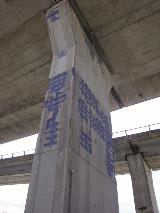

SHANE COLL – BUILDING LINE PRODUCT MANAGER AT MAPEI SOUTH AFRICA PROVIDES INSIGHT ON INFLUENTIAL FACTORS WHEN REPAIRING CONCRETE
South Africa’s infrastructure network faces the same problem as that of several other countries – a harsh sulphate and chloride-rich environment, as well as aging structures which are being over-used whilst servicing a rapidly growing population.
There are a number of factors such as strength, durability, coefficient of thermal expansion, permeability, low drying shrinkage, chemical properties, and modulus of elasticity that must be considered to select the most appropriate, compatible, cost-effective repair materials.
Bond and compressive strengths are important properties in almost all repairs and protective works. The strength of the base material and repair materials should be nearly the same or that of repair materials should be slightly higher. This is to achieve a proper and uniform flow of stress and strains through materials. Bond and compressive strengths are particularly important when identifying structural and non-structural repair applications. Knowing the difference between both is key in choosing a cost effective, durable and structurally suitable repair solution.
The repair material needs to be durable under exposure conditions to which the defected structure is exposed. It should demonstrate adequate resistance against chemical attack and resistance to any form of energy such as ultra-violet rays and heat. Surface preparation also plays a key role in ensuring a repair carried out with a suitable mortar is durable and appropriate for the intended purpose and environment.
The repair material must have a coefficient of thermal expansion similar to that of the existing concrete to make sure that undue stresses are not transferred to the bonding interface or the substrate. Thermal incompatibility may cause failure either at the interface or within the material of lower strength, particularly for overlays.
Due to the fact that shrinkage in the existing concrete/structure has already occurred, it is essential for repair materials to have the lowest possible drying shrinkage to ensure there is no failure between the bond of the new repair material and the underlying existing concrete surface.
The permeability of the repair materials should be low to prevent the penetration of aggressive substances such as carbon dioxide, water, oxygen, and industrial gases and vapours. This is to protect the reinforcement from corrosion. As a rule of thumb; the higher the compressive strength then the lower the W/C ratio. The lower the W/C ratio then the lower the permeability of the concrete.
The modulus of elasticity of the repair material must be similar to that of the existing concrete.
In non-structural repairs, a lower modulus of repair material is desirable to help in the relaxation of tensile stresses induced by restrained drying shrinkage.
A pH close to 12 (alkaline environment) of repair material is better for corrosion protection to embedded reinforcement. Otherwise, additional protection for the existing reinforcement may be provided by cathodic protection, reinforcement coatings placed directly on the reinforcement or externally placed coatings on the concrete.
MAPEI has positioned their product offering not as individual products, but as a total system solution for construction projects. The MAPEI range of repair and skimming mortars meet varying requirements and technical needs within the local construction market - giving your structure the durable finish needed to prolong and sustain the asset’s lifecycle.
